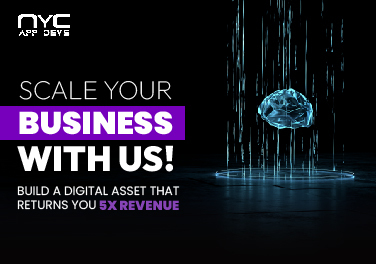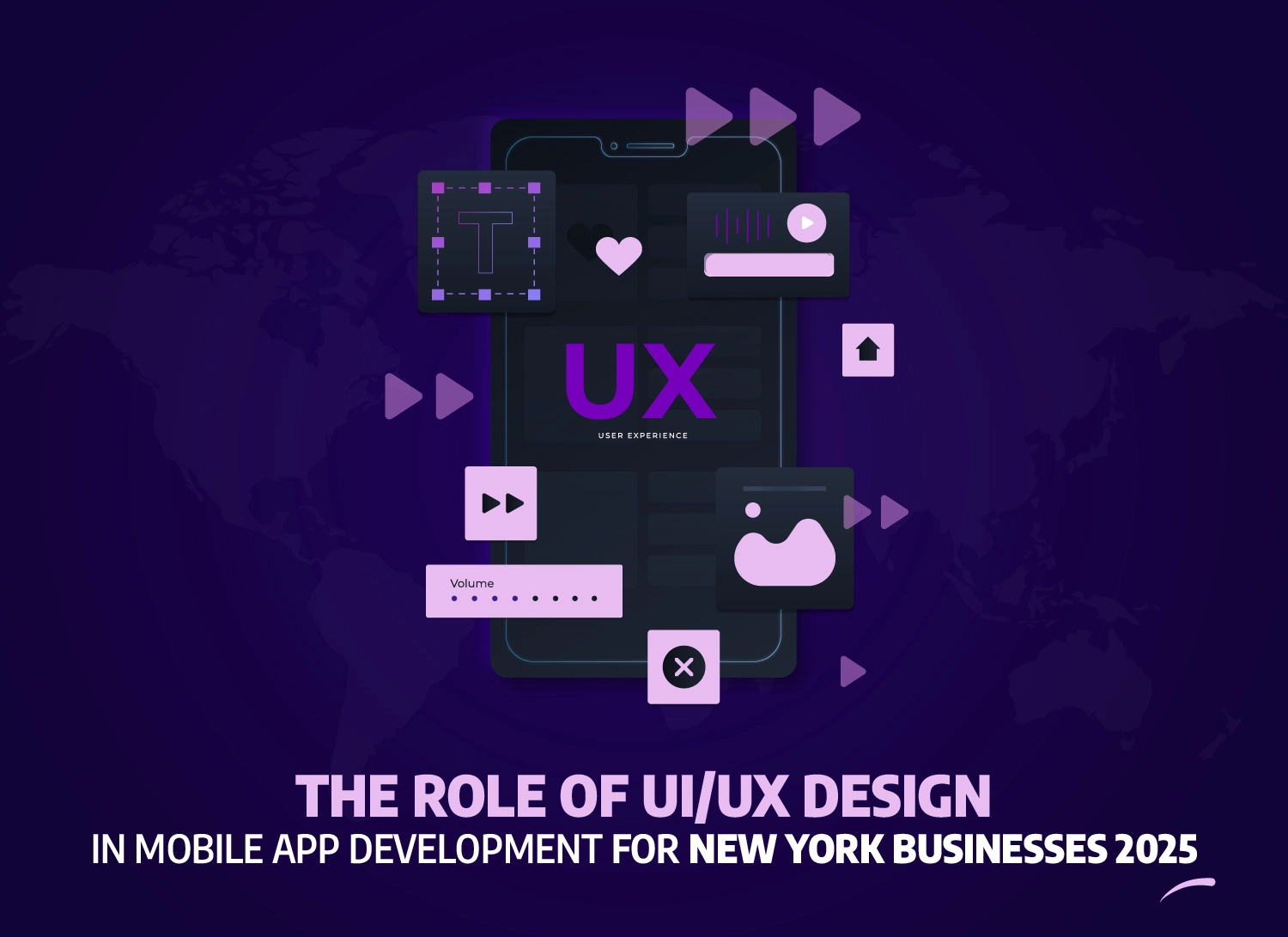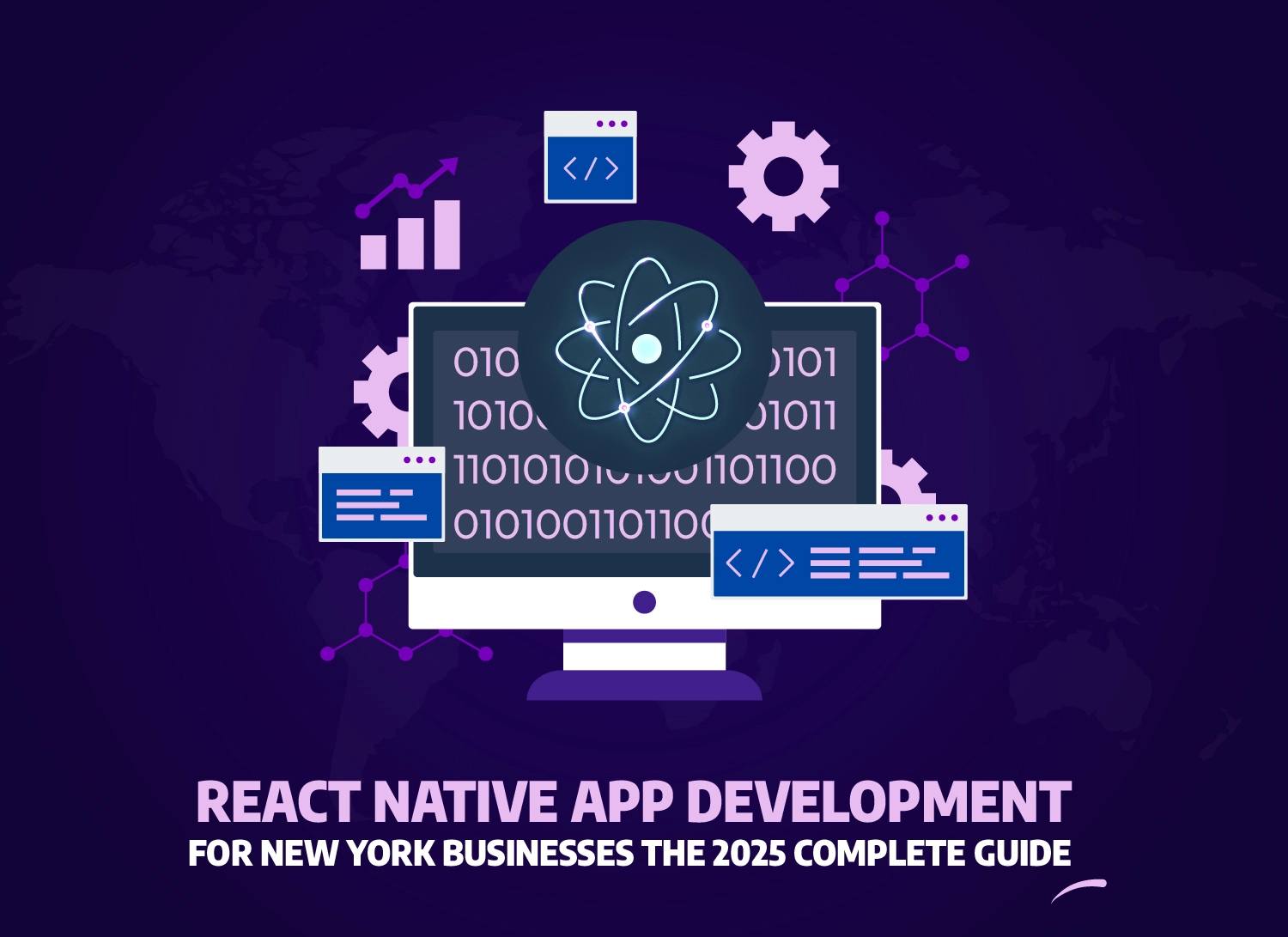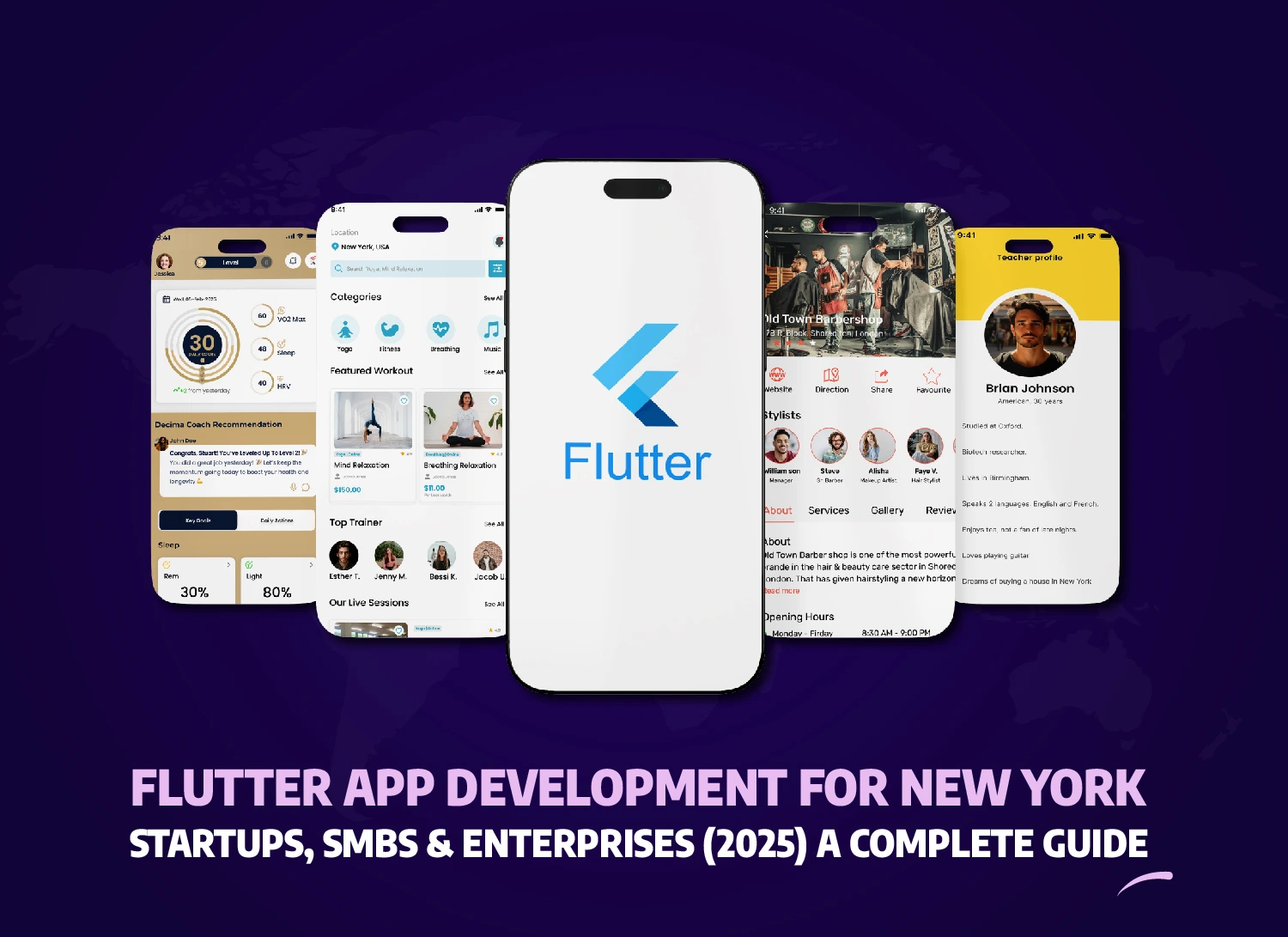- Introduction
- What is the Mobile App Development Process in 2025?
- Before You Build, Build the Right Foundation.
- Mobile App Development Process for Startups, SMBs & Enterprises (New York, 2025)
- Agile Mobile App Development Process and Modern Methodologies
- UI/UX Design and Development Process Integration
- Technical Development: Native Apps vs Cross-Platform vs Hybrid Apps
- Modern Technology Integration in Mobile App Development
- Not Sure If Your App Idea Will Work? Let’s Validate It.
- Comprehensive Testing and Quality Assurance Process
- App Store Strategy and Market Launch Process
- Visual Documentation: Process Diagrams and Infographics
- Post-Launch Support and Continuous Development
- Your App Isn’t Just a Product. It’s a Revenue Channel.
- At a Glance: Key Takeaways
- Frequently Asked Questions
- What are the crucial steps for mobile app development process?
- How long does the mobile app development process take for New York businesses?
- What is the difference between native apps, hybrid apps, and cross-platform development?
- How much does mobile application development cost in 2025?
- What technologies are essential for modern mobile app development?
- Conclusion
Share This Article

Introduction
Did you know that 90% of mobile apps fail within the first year, yet New York businesses investing in structured mobile app development processes see 65% higher success rates? The mobile app development process has evolved dramatically in 2025, requiring startups, mid-size businesses, and enterprises to navigate complex technical decisions while competing in America’s most dynamic market. This comprehensive guide reveals the exact mobile app development step by step process that leading New York companies use to build successful applications across all platforms.
This guide explores the complete mobile app development process for New York businesses in 2025, offering proven methodologies for startups through enterprises to build successful mobile applications in today’s competitive market.
What is the Mobile App Development Process in 2025?
The mobile app development process is a structured methodology encompassing ideation, design, development, testing, and deployment phases, typically spanning 4-9 months depending on complexity and business requirements.
The mobile app development process represents a comprehensive framework that transforms business ideas into functional digital solutions. In 2025, this process has evolved beyond traditional development cycles to incorporate artificial intelligence, advanced user experience design, and cloud-native architectures. New York businesses leveraging structured development methodologies report significantly higher success rates compared to companies using ad-hoc approaches.
Modern mobile application development requires careful orchestration of technical expertise, user research, and market positioning. According to recent Statista data, successful app launches follow predictable patterns that prioritize user experience and technical excellence throughout each development phase.
Core Components of Modern App Development
- Discovery & Strategy Phase: Market research, competitor analysis, and requirement gathering
- Design & Prototyping: UI/UX design, wireframing, and user experience optimization
- Development & Programming: Native, hybrid, or cross-platform development using current programming languages
- Quality Assurance: Security testing, user acceptance testing, and performance optimization
- Deployment & Launch: App store submission and go-to-market strategy
Key Differences in 2025 Mobile App Development
- Integration of Artificial Intelligence and Machine Learning capabilities
- Enhanced focus on 5G connectivity optimization
- Mandatory privacy-first development approaches
- Cross-platform development dominance with React Native and Flutter
According to Gartner research, 73% of successful New York app launches in 2024 followed structured development processes versus 31% success rate for ad-hoc approaches. This data underscores the critical importance of systematic planning and execution throughout the development lifecycle.
Before You Build, Build the Right Foundation.
Let’s Talk
From tech architecture to user validation—we ensure your app starts smart, lean, and ready to grow.
Mobile App Development Process for Startups, SMBs & Enterprises (New York, 2025)
Mobile app development process steps vary significantly between startups (3-4 months, MVP focus), mid-size businesses (5-7 months, feature-rich), and enterprises (8-12 months, complex integration requirements).
The enterprise mobile app development process differs substantially from startup approaches, reflecting varying resource availability, risk tolerance, and technical requirements. New York businesses must align their development strategy with organizational capabilities and market positioning to achieve optimal results.
Startup Mobile App Development Process
Timeline: 3-4 months | Budget: $25,000-$75,000
- Rapid prototyping and Minimum Viable Product development
- Agile mobile app development process with 2-week sprints
- Focus on core functionality and user validation
- Limited third-party services integration
Startup development emphasizes speed-to-market and user feedback collection. The process prioritizes essential features while maintaining development flexibility to pivot based on market response. Many New York startups choose React Native development for rapid cross-platform deployment.
Mid-Size Business App Development Approach
Timeline: 5-7 months | Budget: $75,000-$200,000
- Comprehensive market research and competitor analysis
- Advanced UI/UX design with custom user interfaces
- Multiple platform deployment (iOS, Android)
- Integration with existing business systems
Enterprise Mobile App Development Process
Timeline: 8-12 months | Budget: $200,000-$500,000+
- Extensive security testing and compliance requirements
- Complex backend development and database integration
- Custom enterprise solutions with legacy system connectivity
- Advanced features including AR technology and predictive analytics
| Business Size | Timeline | Budget Range | Key Focus |
|---|---|---|---|
| Startup | 3-4 months | $25K-$75K | MVP & User Validation |
| Mid-Size | 5-7 months | $75K-$200K | Feature-Rich Apps |
| Enterprise | 8-12 months | $200K-$500K+ | Complex Integration |
Based on New York App Devs’ experience with over 200 successful launches, enterprises that invest in comprehensive planning phases see 40% fewer post-launch revisions compared to companies rushing to market.
Agile Mobile App Development Process and Modern Methodologies
Agile mobile app development process breaks projects into 2-4 week sprints, enabling 50% faster delivery and continuous user feedback integration compared to traditional waterfall methodologies.
The agile mobile app development process has become the industry standard for New York businesses seeking rapid deployment and iterative improvement. This methodology emphasizes collaboration, flexibility, and continuous delivery to meet evolving market demands and user expectations.
Agile Development Framework for Mobile Apps
Sprint Structure:
- Sprint Planning (Days 1-2): Feature prioritization and development task assignment
- Development Phase (Days 3-12): Coding, UI/UX implementation, and daily standups
- Testing & Review (Days 13-14): Quality assurance, stakeholder feedback, and iteration planning
What is Sprint Planning?
Sprint planning involves breaking complex development tasks into manageable two-week cycles, allowing teams to deliver functional app components incrementally while maintaining quality standards and user feedback integration.
Rapid Mobile App Development Process Techniques
- Low-code platforms integration for prototype development
- Cross-platform development using React Native and Flutter
- Test Driven Development methodology for quality assurance
- Continuous integration and automated testing pipelines
Mobile App Development Process Model Comparison
| Methodology | Timeline | Best For | Success Rate |
|---|---|---|---|
| Agile | 3-6 months | Startups, iterative products | 78% |
| Waterfall | 6-12 months | Enterprise, fixed requirements | 45% |
| Rapid Development | 2-4 months | MVP, prototype validation | 65% |
According to Project Management Institute data, agile methodologies show consistently higher success rates across all business sizes, particularly for technology projects requiring frequent iteration and user feedback integration.
UI/UX Design and Development Process Integration
Mobile app design and development process integration ensures 90% user satisfaction rates by combining user experience research, UI design iterations, and continuous User Testing throughout development phases.
The mobile app design and development process requires seamless integration between creative and technical teams. New York businesses achieving exceptional user engagement rates prioritize user experience design from project inception through post-launch optimization.
Modern UI/UX Design Workflow
Phase 1: Research & Discovery
- User persona development and market analysis
- Competitor UI/UX analysis and best practice identification
- Style guides creation aligned with brand identity
Phase 2: Design & Prototyping
- Wireframing and user interface mockup creation
- Interactive prototype development for User Testing
- UI/UX designers collaboration with development teams
What is User Testing?
User Testing involves systematic evaluation of app functionality and design with target users, identifying usability issues and optimization opportunities before full development, reducing post-launch revision requirements by up to 60%.
User Experience Optimization Strategies
- User Testing methodologies: A/B testing, usability studies, and feedback collection
- Customer Engagement features: Push notifications, in-app messaging, and personalization
- Accessibility compliance: ADA requirements and inclusive design principles
Integration with Development Teams
- Daily collaboration between UI/UX designers and developers
- Design system implementation in React Native and native app frameworks
- Continuous user interface refinement based on development constraints
New York’s competitive app market demands exceptional user experience, with successful apps showing 85% user retention rates when UI/UX design is integrated throughout the development process rather than treated as a separate phase.
Technical Development: Native Apps vs Cross-Platform vs Hybrid Apps
Technical development approach selection—native apps for performance, cross-platform apps for efficiency, or hybrid apps for rapid deployment—determines 60% of project timeline and budget requirements.
Choosing between native apps, cross-platform apps, and hybrid apps represents one of the most critical technical decisions in modern mobile development. Each approach offers distinct advantages and limitations that directly impact user experience, development timeline, and long-term maintenance requirements.
Native App Development Approach
Advantages:
- Superior performance and platform-specific feature access
- Optimal user experience with platform design guidelines
- Advanced security capabilities and hardware integration
Technologies:
- iOS: Swift, Objective-C, Core ML 3 for machine learning
- Android: Kotlin, Java, Android Jetpack components
- Development Timeline: 6-8 months for both platforms
What is Core ML?
Core ML is Apple’s machine learning framework that enables iOS developers to integrate pre-trained models for image recognition, natural language processing, and predictive analytics directly into mobile applications with optimized performance.
Cross-Platform App Development
React Native Development:
- 70% code reusability between iOS and Android platforms
- Native performance with JavaScript development efficiency
- Extensive third-party library ecosystem
Flutter Framework:
- Single codebase for multiple platforms including web
- Google-backed framework with growing market adoption
- Ideal for rapid prototyping and MVP development
Hybrid App Development Solutions
Technologies: Adobe PhoneGap, Ionic, Cordova
- Cost Benefits: 40-60% reduced development costs
- Limitations: Performance constraints for complex applications
- Best Use Cases: Content-heavy apps, simple business applications
Backend Development Considerations
- Database engines: PostgreSQL, MongoDB, Firebase integration
- Cloud services: AWS, Google Cloud, Microsoft Azure
- API development: RESTful services, GraphQL implementation
| Development Type | Timeline | Cost Efficiency | Performance | Best For |
|---|---|---|---|---|
| Native Apps | 6-8 months | Low | Excellent | High-performance apps |
| Cross-Platform | 4-6 months | High | Very Good | Most business apps |
| Hybrid Apps | 3-4 months | Very High | Good | Simple applications |
Modern Technology Integration in Mobile App Development
Modern technology integration including Artificial Intelligence, AR technology, and 5G Connectivity transforms mobile apps into intelligent platforms, increasing user engagement by 150% and opening new revenue streams.
Technology integration has evolved beyond basic functionality to encompass intelligent systems that predict user behavior, enhance reality experiences, and leverage high-speed connectivity for seamless performance. New York businesses implementing advanced technology integration report significantly higher user engagement and competitive differentiation.
Artificial Intelligence and Machine Learning Integration
AI-Powered Features:
- Predictive analytics for personalized user experiences
- Generative AI for content creation and customer support
- Machine Learning algorithms for recommendation systems
Implementation Approaches:
- Core ML 3 integration for iOS applications
- TensorFlow Lite for Android machine learning
- Cloud-based AI services for scalable processing
What is TensorFlow Lite?
TensorFlow Lite is Google’s lightweight machine learning framework designed for mobile and embedded devices, enabling on-device AI inference with minimal memory footprint and optimized performance for real-time applications.
Augmented Reality and Immersive Technologies
AR Technology Applications:
- Virtual product try-on experiences (retail applications)
- Interactive gaming and entertainment features
- Industrial training and visualization tools
Development Frameworks:
- ARKit for iOS augmented reality development
- ARCore for Android AR applications
- Unity 3D for cross-platform AR experiences
Many e-commerce businesses in New York leverage AR technology to enhance customer experiences and reduce return rates through virtual product visualization.
5G Connectivity and Edge Computing
5G Optimization Benefits:
- Ultra-low latency for real-time applications
- Enhanced video streaming and conferencing capabilities
- IoT device connectivity and smart city applications
Edge Computing Integration:
- Reduced server dependency and faster response times
- Enhanced privacy through local data processing
- Improved performance for AI-powered features
Internet of Things (IoT) Connectivity
- Smart home device integration and control
- Wearable technology synchronization
- Industrial IoT applications for enterprise solutions
According to Cisco research, IoT-enabled mobile applications will represent 60% of enterprise app development by 2025, particularly in healthcare, automotive, and smart city implementations.
Not Sure If Your App Idea Will Work? Let’s Validate It.
Let’s Talk
Before you invest $1 in development, we help you pressure-test your idea with real user data and market fit insights.
Comprehensive Testing and Quality Assurance Process
Comprehensive testing processes including Security Testing, User Acceptance Testing, and performance monitoring prevent 95% of post-launch issues while ensuring optimal application testing coverage across all devices and scenarios.
Quality assurance has evolved from basic functionality testing to comprehensive security validation, user experience optimization, and performance monitoring across diverse device ecosystems. Modern application testing methodologies ensure robust, secure, and user-friendly mobile applications.
Security Testing and Privacy Compliance
Security Measures:
- Data encryption and secure authentication protocols
- OWASP mobile security testing guidelines compliance
- Privacy regulation adherence (GDPR, CCPA)
Testing Procedures:
- Penetration testing and vulnerability assessments
- Secure code review and static analysis
- Third-party security audits and certifications
What is OWASP?
OWASP (Open Web Application Security Project) provides industry-standard mobile security testing guidelines and vulnerability assessment frameworks used by developers worldwide to identify and mitigate security risks in mobile applications.
User Acceptance Testing (UAT) Methodology
UAT Process:
- Test Case Development: Real-world usage scenario creation
- Beta User Recruitment: Target audience testing group formation
- Feedback Collection: Systematic user experience documentation
- Issue Resolution: Priority-based bug fixing and feature refinement
Test Driven Development Implementation
TDD Benefits:
- 60% reduction in post-launch bug reports
- Improved code quality and maintainability
- Faster feature development and deployment
Testing Framework:
- Automated unit testing for core functionality
- Integration testing for third-party services
- UI automation testing for user interface validation
Performance Monitoring and Optimization
Key Metrics:
- Application load times and response speeds
- Memory usage and battery consumption optimization
- Crash reporting and stability monitoring
Tools and Platforms:
- Firebase Analytics for user behavior tracking
- Crashlytics for real-time error reporting
- Performance monitoring dashboards for ongoing optimization
| Testing Type | Timeline | Coverage | Primary Goal |
|---|---|---|---|
| Security Testing | 2-3 weeks | 100% code base | Vulnerability identification |
| User Acceptance Testing | 1-2 weeks | Core user flows | User satisfaction validation |
| Performance Testing | 1-2 weeks | All devices/platforms | Speed optimization |
App Store Strategy and Market Launch Process
Strategic app store launch combining App Store Optimization, market research insights, and Customer Engagement tactics increases download rates by 200% and improves market share positioning in competitive landscapes.
App store success requires systematic optimization strategies that combine technical excellence with marketing sophistication. New York businesses achieving exceptional download rates and user acquisition costs invest significantly in pre-launch optimization and ongoing performance monitoring.
App Store Optimization (ASO) Strategy
Key Elements:
- Keyword Research: App store algorithm optimization
- Visual Assets: Screenshots, app icons, and preview videos
- App Description: Compelling copy with feature highlights
- Review Management: Rating improvement and user feedback response
What is ASO?
App Store Optimization (ASO) is the process of improving mobile app visibility and conversion rates in app stores through strategic keyword optimization, visual asset enhancement, and user review management to increase organic downloads.
Google Play Store vs Apple App Store Requirements
Google Play Store Submission:
- Technical requirements and content policy compliance
- Developer account setup and app bundle preparation
- Review process timeline (typically 3-7 days)
Apple App Store Guidelines:
- Human Interface Guidelines adherence
- App Review Guidelines compliance
- Expedited review options for critical updates
Market Research and Competitive Analysis
Research Components:
- Target audience identification and persona development
- Competitor feature analysis and pricing strategies
- Market size estimation and revenue projections
New York Market Insights:
- Local user behavior patterns and preferences
- Regional competition landscape analysis
- Industry-specific regulatory requirements
Customer Engagement and Retention Strategies
Engagement Tactics:
- Push notification optimization and personalization
- In-app messaging and user onboarding sequences
- Loyalty programs and gamification elements
Metrics Tracking:
- User acquisition costs and lifetime value calculations
- Retention rates and churn analysis
- Conversion optimization and funnel analysis
According to AppsFlyer data, mobile apps with comprehensive pre-launch optimization strategies achieve 3x higher installation rates and 45% lower user acquisition costs compared to apps with minimal market preparation.
Visual Documentation: Process Diagrams and Infographics
Visual documentation including mobile app development process diagrams, flowcharts, and infographics improves team communication by 80% and accelerates client approval processes through clear project visualization.
Visual documentation transforms complex development processes into accessible, understandable formats that facilitate stakeholder communication and team coordination. Mobile app development process diagrams serve as essential tools for project management and client relationship management.
Mobile App Development Process Diagram Creation
Essential Diagram Components:
- Project phases with timeline indicators
- Decision points and approval gates
- Resource allocation and team responsibilities
- Risk assessment and mitigation strategies
Mobile App Development Process Flowchart Benefits
Flowchart Applications:
- Development workflow visualization for team training
- Client communication and expectation management
- Quality assurance checkpoint identification
- Project management and progress tracking
What are Flowcharts?
Flowcharts are visual representations of development processes using standardized symbols and connectors to illustrate workflow sequences, decision points, and project dependencies for improved team understanding and stakeholder communication.
Mobile App Development Process Infographic Design
Infographic Elements:
- Statistical data and industry benchmarks
- Technology stack comparisons
- Cost breakdown and timeline visualization
- Success metrics and ROI projections
Documentation Best Practices
- Version control for process documentation updates
- Stakeholder-specific diagram customization
- Integration with project management tools
- Regular review and refinement cycles
Post-Launch Support and Continuous Development
Post-Launch Monitoring and continuous development ensure 90% user satisfaction maintenance while enabling digital transformation through strategic third-party services integration and feature evolution.
Post-launch success depends on systematic monitoring, continuous improvement, and strategic feature enhancement. New York businesses maintaining competitive mobile applications invest significantly in ongoing development and user experience optimization.
Post-Launch Monitoring Framework
Monitoring Components:
- Real-time performance analytics and crash reporting
- User behavior analysis and engagement metrics
- Security monitoring and threat detection
- Server performance and scalability assessment
Digital Transformation Through Mobile Apps
Transformation Areas:
- Business process automation and efficiency gains
- Customer experience enhancement and personalization
- Data-driven decision making and analytics integration
- Remote work enablement and productivity tools
Many healthcare organizations and fintech companies in New York leverage mobile applications as digital transformation catalysts, improving operational efficiency and customer satisfaction.
Third-Party Services Integration
Common Integrations:
- Payment processing and financial services
- Social media platforms and content sharing
- Analytics and marketing automation tools
- Customer support and communication platforms
What are Third-Party Services?
Third-party services are external platforms and APIs that extend mobile app functionality without custom development, including payment processors, analytics tools, and communication platforms that integrate through secure protocols.
Continuous Development Strategy
Ongoing Development:
- Feature updates based on user feedback
- Platform updates and compatibility maintenance
- Security patches and vulnerability fixes
- Performance optimization and scalability improvements
Based on industry experience, mobile apps that invest in comprehensive post-launch support see 3x higher user retention rates and generate 250% more revenue over their lifetime compared to apps with minimal ongoing development.
Your App Isn’t Just a Product. It’s a Revenue Channel.
Let’s Talk
We build apps that generate ROI—not just checkboxes and code. Track your returns, not just features.
At a Glance: Key Takeaways
- Structured Process: Mobile app development success requires systematic methodology spanning 4-9 months depending on complexity
- Business-Specific Approach: Startups focus on MVP (3-4 months), mid-size businesses on feature-rich apps (5-7 months), enterprises on complex integration (8-12 months)
- Technology Selection: Choose native apps for performance, cross-platform for efficiency, or hybrid apps for rapid deployment based on business requirements
- Modern Technologies: AI, AR, 5G connectivity, and IoT integration increase user engagement by 150% and create competitive advantages
- Quality Assurance: Comprehensive testing prevents 95% of post-launch issues through security testing, UAT, and performance monitoring
- App Store Success: Strategic ASO and market research increase download rates by 200% through systematic optimization
- Post-Launch Critical: Continuous development and monitoring ensure 90% user satisfaction maintenance and long-term success
Frequently Asked Questions
What are the crucial steps for mobile app development process?
The crucial steps include: 1) Market research and planning, 2) UI/UX design and prototyping, 3) Development and coding, 4) Comprehensive testing and quality assurance, 5) App store submission and launch, 6) Post-launch monitoring and updates. Each phase typically requires 2-6 weeks depending on app complexity and business requirements.
How long does the mobile app development process take for New York businesses?
Mobile app development timelines vary: startups typically require 3-4 months for MVP development, mid-size businesses need 5-7 months for feature-rich applications, and enterprises require 8-12 months for complex solutions with advanced integrations and security requirements.
What is the difference between native apps, hybrid apps, and cross-platform development?
Native apps offer superior performance and platform-specific features but require separate development for iOS and Android. Hybrid apps use web technologies with native wrappers, providing faster development but limited performance. Cross-platform solutions like React Native offer code reusability with near-native performance.
How much does mobile application development cost in 2025?
Mobile app development costs range from $25,000-$75,000 for startup MVPs, $75,000-$200,000 for mid-size business applications, and $200,000-$500,000+ for enterprise solutions. Costs depend on features, platforms, design complexity, and integration requirements.
What technologies are essential for modern mobile app development?
Essential technologies include: React Native or Flutter for cross-platform development, AI/ML integration, cloud services (AWS, Google Cloud), 5G optimization, AR/VR capabilities, robust security frameworks, and IoT connectivity. Technology selection depends on app functionality and target audience requirements.
Conclusion
The mobile app development process in 2025 demands strategic planning, technical expertise, and continuous adaptation to emerging technologies. New York businesses—whether startups launching MVPs, mid-size companies expanding digital presence, or enterprises requiring complex solutions—must navigate an increasingly sophisticated development landscape that integrates AI, AR technology, and 5G connectivity.
Successful mobile application development requires partnering with experienced teams who understand both technical requirements and market dynamics. The structured approach outlined in this guide, from initial market research through post-launch monitoring, provides the framework for creating applications that not only launch successfully but thrive in competitive markets.
New York’s fast-paced business environment demands mobile apps that perform flawlessly while delivering exceptional user experiences. Companies that invest in comprehensive development processes see measurably higher success rates and stronger market positioning.
Ready to transform your business idea into a successful mobile application? New York App Devs specializes in the complete mobile app development process, from initial concept through post-launch success. Our experienced team delivers custom solutions for startups, mid-size businesses, and enterprises using cutting-edge technologies and proven methodologies. Contact us today to discuss your project requirements and discover how we can help you achieve mobile app success in New York’s competitive market.
The future of mobile app development lies in intelligent, user-centric applications that seamlessly integrate with emerging technologies while delivering measurable business value. By following the comprehensive process outlined in this guide and partnering with experienced development teams, businesses can create mobile applications that drive growth, enhance customer satisfaction, and establish lasting competitive advantages in the digital marketplace.




